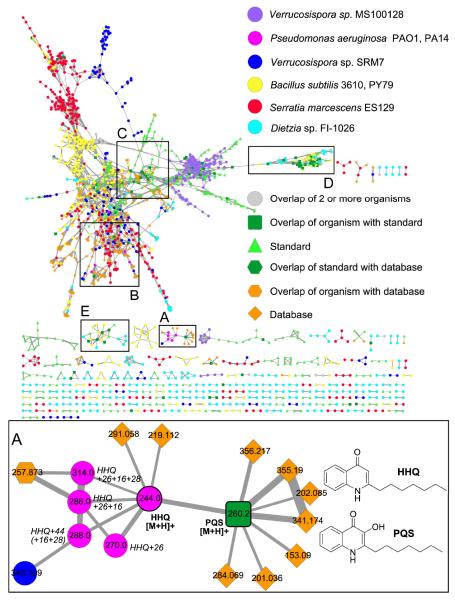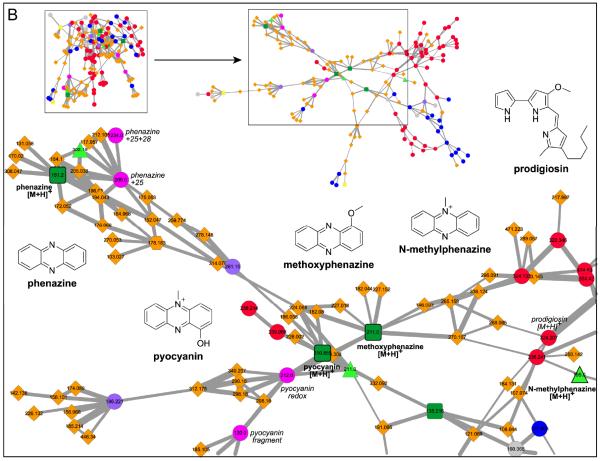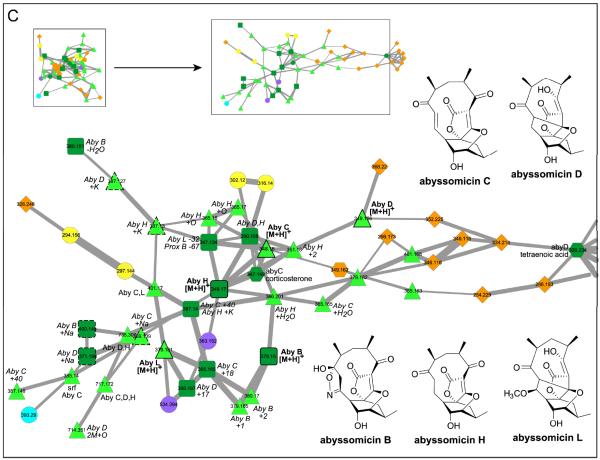Figure 4. Bacterial network with a cosine similarity score cut off of 0.65.
This network was generated from direct infusion of extracts or direct nanoDESI-MS/MS sampling of 8 bacteria, 14 known compounds,and 5 databases.The inlaid portions of the network were rearranged in Cytoscape for easier visualization of node connectivity and annotation.Italicized labels indicate putative assignments. A. 2-Heptyl-4-quinolone (HHQ) and Pseudomonas quinolone signal (PQS) fragment similarly. The structures of the connected database nodes do contain conjugated cyclic moieties, but are not of the same molecular family as HHQ and PQS. B. Small molecules m/z <350 in the condensed cluster. Commercial Pseudomonas aeruginosa molecules pyocyanin and methoxyphenazine overlap with sample spectra, whereas N-methylphenazine does not. Phenazine fragments differently. S. marcescens sp. ES129 yields a node with a precursor mass that matches to prodigiosin, which is supported by comparison of the MS/MS sample spectra to published spectra. C. MS/MS spectra of abyssomicins (Aby) B, C, D, H, and L purified from Verrucosispora sp. MS100128 and proximicin B isolated from sp. SRM7 were incorporated into the bacterial network. Aby B and H “seed” spectra overlapped with data directly sampled from Verrucosispora sp. VM37 (bold outlined dark green squares). Aby C, D, and L were incorporated into the network, but do not match to sample data (bold outline light green triangles). Aby J and proximicin B were not incorporated into the network. D. The surfactins (Srf) 1+ cluster includes protonated (H), sodiated (Na), and potassiated (K) forms of surfactinC13-15. Protonated precursor nodes are labeled with bold solid outlines. This cluster reveals nodes for precursor mass m/z 994.6, 14 less than Srf-C13, suggesting the presence of a C12 surfactin and was instrumental in dereplication of the bioactive molecule/s from Dietzia sp. FI-1026 (cyan). E. Putatively assigned surfactin 2+ cluster.




